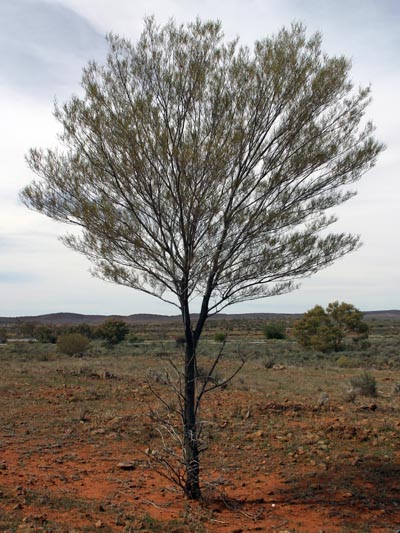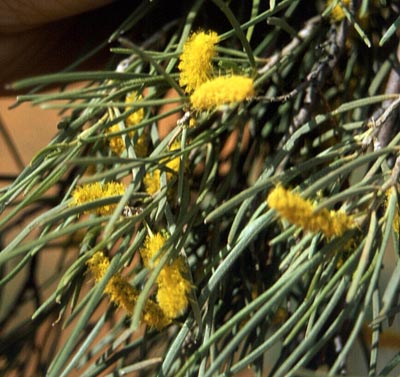|
Acacia aneura
mulga
Mulgas occur throughout the Fowlers Gap Station, prefering
stony outcrops at the tops of rises and hills. Many of the mulgas on the
Station are dead, which is a worrying trend put down to the influences
of the prolonged drought but perhaps also to the lack of genetic diversity
present, implying that they may be diseased.
Mulgas are small upright trees of variable height (1-14
m), but more commonly 2-5 m height. They typically have an "upright
bottle brush" appearance with the single lower trunk devoid of branches,
but hybrids may have branches from ground level upwards, or may be multi-trunked.
Bark: rough.
Leaves: (phyllodes, actually - Mulgas are Acacias) are terete
to linear, 20-110 mm long and 0.7-10 mm wide with fine veins and hairs.
Phyllodes are grey-green and area hairy on the younger growing parts.
Flowers: 1 per axil, short, oblong or cylindrical, 8-25 mm long
and are bright yellow.
Fruit: seedpods are papery to woody, variable, flat and to 20 x
60 mm. Pods are brown and resinous, reticulately veined often with thin,
winged margins.
Source: Frank Kutsche and Brendan Lay (2003). Field guide to
the plants of outback South Australia. Department of Water, Land and
Biodiversity Conservation, South Australia, ISBN 0 7590 1052 8.
Phillip Moore (2005). A guide to plants of inland Australia. Reed
New Holland, ISBN 1 876334 86 X.
Photos: Ian Roach
Back
|

 |







